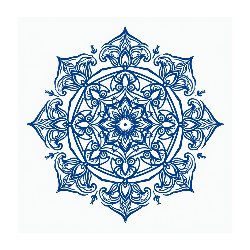
A Day in the Life of a Product Management Consultant
Morning Kick-Off: Setting the Context
Each morning at Product Siddha starts with structure and clarity. As a Product Management Consultant, I begin the day by connecting with the development team to review what features are being built next and what design updates or functionality adjustments are planned.
At 9:45 AM, we hold a quick daily check-in with developers – a short sync to align on priorities, blockers, and expectations. Our team collaborates primarily through Slack, which stays active throughout the day for real-time communication, and Jira, where every task, bug, and backlog item is tracked.
Once the stand-up wraps up, I open my project dashboards to scan key metrics and yesterday’s performance numbers. Which modules progressed? What user feedback came in overnight? Are there any new issues reported in testing? This quick diagnostic shapes the day’s focus.
At this stage, my role is less about project oversight and more about strategic alignment. I spend ten minutes reviewing the roadmap with the product owner, then fifteen minutes auditing the backlog to ensure that what’s being built connects directly to business objectives – not just ad-hoc requests.
Mid-Morning: Collaboration and User Insights
Mid-morning usually brings a rhythm of collaboration. Using tools like Miro, we run remote brainstorming sessions and design reviews with UX and UI teams. These sessions help clarify working expectations and visualize user flows.
As a product management consultant, my focus is on communication and context-sharing — ensuring designers, developers, and business teams interpret goals consistently.
Alongside, I run or review results from user interviews and usability tests. These qualitative insights help detect potential friction points early, whether in onboarding, navigation, or feature comprehension.
Sometimes I identify small but meaningful issues – for example, a password reset link not working correctly – and work with developers to fix it promptly. These rapid feedback loops keep the user experience seamless and the team focused on accuracy.
Lunch & Learning: Quiet Reflection
Lunch offers a short pause, usually around 2 PM. I take this time for light reflection – reading a short piece on product frameworks, agile trends, or market shifts.
Often, while eating, I jot down quick thoughts:
“Should we prioritize value themes beyond features?”
“Can we reorganize our roadmap by business impact instead of effort?”
After lunch, I clear emails and respond to developer questions in Slack – typically clarifications about acceptance criteria, dependencies, or user story details logged in Jira. These micro-interactions keep the momentum steady across teams and time zones.
Afternoon: Mapping, Testing, and Planning
Afternoons are where the deep work happens. Between strategy sessions and testing cycles, I focus on connecting insights with execution.
For the next few hours, I review Jira tickets, test new features, and perform short 20-minute bug verification sessions alongside the development team. I check not only for functional errors but also for user experience details like button alignment, text visibility, and overall visual consistency.
In parallel, I might map the broader 12-month product strategy – identifying which markets to target, what customer problems remain unsolved, and where competitor shifts might create new opportunities.
At Product Siddha, our consultants use adaptable frameworks rather than one-size-fits-all models. For instance, in a recent MarTech project, we structured a client roadmap using the “Discover–Engage–Convert–Retain” framework, customizing each phase to their stack and KPIs.
Writing user stories, defining acceptance criteria, and prioritizing backlog items based on business value and technical complexity form the core of the afternoon. Every decision is backed by analytics, research, and stakeholder feedback.
Late Afternoon: Partnership and Progress Alignment
Around 4:15 PM, I meet with the partnership teams to exchange updates and gather feedback from other consultants, marketing, and sales stakeholders. These sessions are vital for cross-functional visibility — understanding what’s coming next, aligning communication, and syncing dependencies between parallel projects.
Before wrapping up, I prepared a concise status update for senior management. It outlines key wins, progress against roadmap goals, open risks, and upcoming deliverables – often visualized through a dashboard highlighting metrics like user adoption, conversion trends, or feature engagement.
Finally, I revisit Jira to update ticket statuses, ensure testing feedback has been logged, and confirm that any bugs identified earlier have been resolved.
Evening: Skill Building and Preparation
Evenings are reserved for personal development and preparation for the next day. I dedicate about thirty minutes to professional growth – listening to product leadership podcasts, reviewing new frameworks, or refining facilitation techniques for upcoming client workshops.
Before closing the laptop, I organize the next day’s agenda: update to-do lists, check dependencies, and set reminders for the morning stand-up. Product Siddha’s emphasis on documentation and transparent workflows ensures that knowledge is preserved across the consulting team, helping projects scale smoothly as complexity grows.
Final Thoughts
The life of a Product Management Consultant at Product Siddha is structured yet dynamic – blending strategic vision with tactical precision. Each day balances planning, testing, communication, and reflection.
It’s not about constant meetings or heroic effort but about rhythm and clarity: connecting with teams, analyzing insights, and aligning outcomes with measurable business impact.
If you’re considering working with a product management consultant, seek one who not only manages timelines but also bridges strategy, development, and data. At Product Siddha, we believe in consultancy built on clarity, collaboration, and continuous improvement – where every decision turns insight into impact.
